Another Earth Day, and world ecosystems continue to face imminent danger from humanity’s ecological overreach and climate change. Following the original 1970 theme of a national teach-in, promoting awareness of the acute problems, we must pose solutions to advance environmental sustainability, building a movement to work toward its implementation.
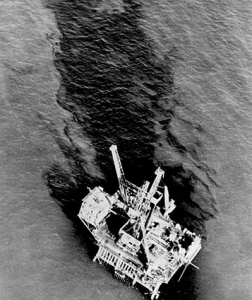

The Earth at its Tipping Point
Planet Earth, creation, the world in which civilization developed, faces imminent peril today from anthropogenic climate change. The world’s major scientists all agree, despite continuing industry-supported political inaction. The hunger of humanity for technology, growth, and mobility, an economy based on the consumption of fossil fuels, threatens not only the other millions of species on the planet, but the survival of humanity itself.
Consider that increasing drought threatens our water supplies, encourages massive wildfires that burn homes and habitat. As greenhouse gas levels multiply and the planet warms to record levels, we have seen unprecedented melting of the glaciers. Thus the oceans rise, feeding super-storms that have destroyed entire regions, costing billions in taxpayer dollars for recovery. While in many regions, the effects still seem slight, former NASA climatologist Dr. James Hansen argues we now approach a tipping point of no return, where climate disasters will become the norm.
Earth Day — April 22 — marks the anniversary of what many consider the birth of the modern environmental movement in 1970. After witnessing the ravages of the Santa Barbara oil spill and the burning of Cleveland’s toxic Cuyahoga River in 1969, Wisconsin Senator Gaylord Nelson proposed a national teach-in in the spirit of the student anti-war movement. By promoting public consciousness about air and water pollution, he and his co-founders advanced environmental protection onto the national political agenda. The movement now in its 43rd year remains as relevant and necessary as ever.
Personal Quest for a Vision of Healthy Living
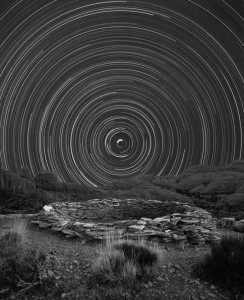

Earth Day awareness and action should begin as a personal vision, a step back from the noise of crowds, the routine of getting to work on time, the confines of autos prowling city streets. We must envision our own efflorescence as part of a divine plan that registers in both spiritual and scientific terms.
Step out into the wilds, listen to the call of birds, feel the warmth of the sun. The human spirit heals and strengthens amid the wild beneficence of swirling clouds bringing rain, following the trail of the deer, to the place unmarked. Consider Biblical accounts of Moses, Elijah, and Jesus fasting for 40 days and nights in mountain and desert wilderness, facing thirst, hunger, wild animals and other temptations. As well, the traditional Native American Vision Quest encourages deep communion with the fundamental forces and spiritual energies of creation, where divine guidance can arrive in the form of a vision or dream, a purpose or destiny.
The healing and blessings of Creator’s green Earth also register on scientific terms. Mountain meadows process snow and rain into springs and rivers to slake our thirst. Tall forests exchange carbon dioxide and filter pollutants for our daily breathing pleasure. The shifting tides of the vast oceans nurture your red snapper dinner as well as foment the storms that invigorate my eggplant, lettuce, and carrot salad.
As wildernesses are ploughed under for subdivisions and freeways, our rivers and skies polluted with the toxic outflow of industrial consumerism and capitalism, our species gradually loses the ability to heal itself and prosper into the future.
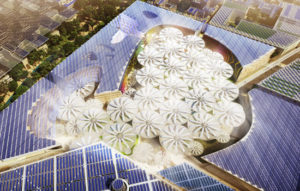

The Divine Plan of Sustainability
The Second phase of Earth Day awareness and action requires one to recognize their collective social responsibility. We all have something to contribute, part of the circle of life sustained by breathing, drinking and eating. Accordingly, we humans must listen and learn from the divine plan of creation, and design our homes, neighborhoods, cities – our entire lives – around its principles.
I grew up in a small New England college town where walking and free buses rivaled passenger automobiles. Trees outnumbered houses and freeways remained distant, so us humans blended (sort-of) well with the oaks and rolling hills. When I moved to Southern California with millions more inhabitants, I found creeping mountain lions, hopping deer, and cold-running streams where steelhead trout spawned, all facing freeway extensions, growing suburban sprawl, and suffocating smog.
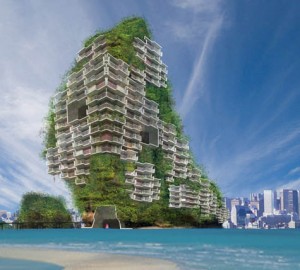

We need to follow the Earth’s plan here, protect more land and foster more trees, to guard our fresh water, clean air, and wildlife. We should eat more organic vegetables and turn against factory farming of produce and livestock that deforests and despoils landscapes.
We must learn to commute more sustainably, riding buses and light rail, maybe choosing to live close to work, school, shopping and train stations. Maybe instead of driving powered by the oil fouling our climate, use alternative fuels like the recycled vegetable oil biodiesel I drive with. At least we should choose more-efficient cars, hybrids, plug-ins and clean diesels.
Visionary projects like long-distance high-speed rail, despite financial and environmental challenges, should be supported. Yes, I understand California’s recent bullet train has been mismanaged, and has succumbed to a myriad of special interests, but the vision remains.


We must demand our municipalities eschew coal and gas in favor of wind and solar, that can power our electric cars and trains, heat and cool our homes. The City of Los Angeles just pledged to phase out using coal-generated electricity by 2025. The move toward extracting unconventional shale gas with hydro-fracturing or fracking presents significant dangers to land and water resources. Sustainably produced renewable sources of energy such as wind and solar must be integrated into the economy today. This requires us to demand measures such as a carbon fee and dividend, which would put a price on the toxicity of fossil fuels, and could be reinvested to compensate families who would have to pay for higher energy costs.
We must learn that our trash is a resource, and reduce our needs, reuse what we can, and recycle the rest for a cleaner tomorrow. Consider the landfills marring the tangled green hills, the toxic drip into groundwater, and the smell of methane and worse, tainting the breeze.
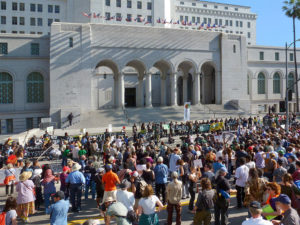

The Earth’s Democracy: Your Voice is Needed
Finally, we should speak out. We should participate in our democracy and let our representatives know we demand a sustainable future for ourselves and our planet. In February, a coalition of 100 groups from across Southern California led 1,200 people into the streets of downtown LA demanding the President act today to solve the climate crisis. The same day, tens of thousands of people did the same across the country. The movement is building and making a difference.
Some might not consider environmentalism a spiritual endeavor. Take a walk into the wild hills and listen to the hawk telling her story. Keep an eye out for burning bushes. People think they could never personally change the world, but faith in a higher power can lead to action, the true medicine of overcoming. Industry, business, government and special interests all, in the end, must adhere to the rhythms of creation. Let us help them by showing the way.
Jack Eidt spoke at Earth Day / UN Environment Day 2013, in Whittier, California, on April 21, 2013.
Updated 14 April 2019

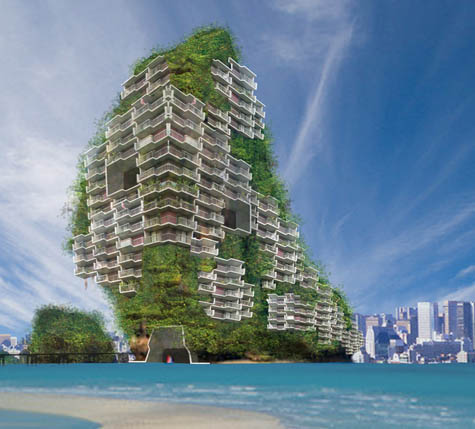



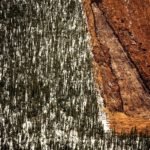

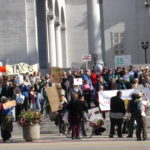






Pingback: Earth Day Sustainability Movement
This blog was… how do you say it? Relevant!!
Finally I have found something which helped me.
Many thanks!